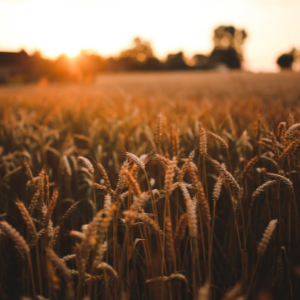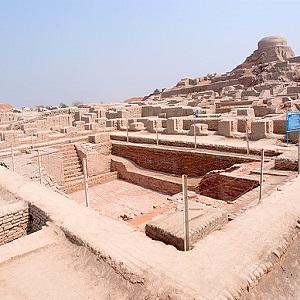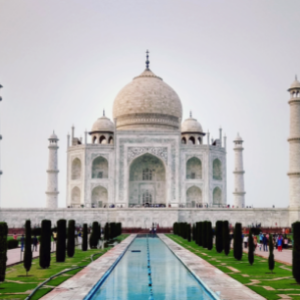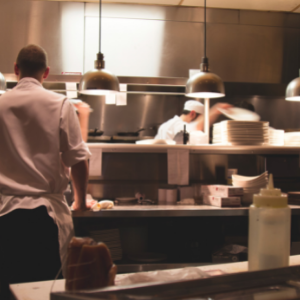India is known for its rich culture, thousands of years old history, geographical features, unity in diversity & different festivals. These all thing together makes our cuisine more diverse & unique. Explore Indian Food history & more.
Indian cuisine reflects more than 6000-year-old history where communities & culture lead to distinct flavors & regional cuisine. From Harrapan civilization to the modern-day, our food journeyed a long way & changed over time. Few traditional recipes are there for thousands of years which we use now.
We Indians are the brand Ambassador of our cuisine & made it famous worldwide. In each & every corner of the globe, you will find Indian food. But how has today’s cuisine evolved & why is Indian food so flavourful? That is interesting & exciting.
Indian Food History
The beginning of Agriculture
The beginning of agriculture in the Indian subcontinent comes from the North-West part of India. As per the Archaeological survey, crops were grown in the cleared forest around 8000 BCE in north Rajasthan. Mehrgarh is a prehistoric site located in Baluchistan, which shows the earliest evidence of farming & herding in South Asia as per Archaeological survey (Mehrgarh is a Neolithic site dated 7000BCE to 3000 BCE).

Indus Valley Civilization : (3000 BCE to 1500 BCE)
Indian Food History

To know the evolution of modern-day Indian cuisine, one has to go back to Indus valley civilization, where Indus valley & surrounding regions lived in various resources, both domestic & wild. Study shows that barley & wheat are the two kinds of cereal that have grown during this era. They also cultivated peas, beans & other pulses. The first long-distance trade started during this period with Mesopotamia. Trade was limited to luxury goods like spices, textile & precious metals. The evolution of Indian cuisine started from here, with the first culinary influence of Mesopotamian.
Vedic Period ( 1500BCE to 600 BCE)
The development of society happened during the Vedic period that influences the growth of culinary habits. During this era, the civilization started shifting toward Indo- Gangetic plains. Agriculture was the main occupation of people. Vedas was composed during this period. A better form of cultivation was introduced. Fruits, vegetables, grains, spices, milk products, and honey consider being regular diets. Amalka (Myrobalan fruit) & Mangoes are mentioned in Vedic literature. The cow was a symbol of wealth during this period.
Actual Indian food evolves with the concept of Ayurveda, which was composed during the Vedic period. Ayus means Life & Veda means Knowledge. Ayurveda is one of the great examples that emphasize living life in accord with the law of nature. Ayurveda teaches us to maintain balance in life. People around the world are tending toward the power & benefits of Ayurveda. During this era, food has given top priority because it is a basic need of human beings. Diet was mapped as per individual body types.
6th Century BCE to 1st Century BCE
This period in India is known as 2nd urbanization & saw the growth of several urban centers in Gangetic valley in India. This period gives rise to new religious concepts – Jainism & Buddhism. Both these religions stressed the noninjury of living beings. That encouraged people and took vegetarianism & drew away from the cycle of animal sacrifice. The Mauryan Empire was flourished, between 322BCE to 180 BCE, which taught us the basic kitchen etiquettes.
1st Century CE to 5th Century CE
This period witnessed the rise of the Gupta Empire from the 3rd Century to the 5th Century. This period is also known as the Classical or Golden age of India. Spices formed the prime commodity of commerce & Gupta Emperor had trade relations with the Roman empire. Pepper was exported to Iran also at the exchange for a superior horse breed.
This period develops Dharmasastra, which mentioned the code of conduct & moral principles for Brahmanical religion. This text laid down rules concerning cooking & consumption of food. This era shows the spiritual importance in society.
Puranic Hinduism & Concept of Prasad ( 5th Century to 10th Century)
It’s a crucial period when Puranas was composed. This era gives growth of the concept of a personal god in Hinduism. People started worshiping by offering specific food called Bhoga to deity, & then distributed it among devotees as Prasada.
Another development was the growth of Tantricism. It is an ideal sought to unleash the power of forbidden substance to reach the divine. Mamsa (Meat) & Madya (Wine) consider being worthy offerings to a god.
Impact of Islamic Culture in Indian Society

Indian Food History
Islam in India was introduced in the 7th Century CE when the Arab community started coastal trade on the western shoreline of India, particularly the Malabar coast & Gujrat. Samosa, a popular snack in north India, had an origin in the Arab world. In Arab cookery books of the 10th & 11 centuries, CE mentioned meat-filled patties called Sambusas. But the culinary influence achieved the most refined & sophisticated form under the Mughal.
Rich gravies with nuts, saffron, & aromatic herbs were introduced in cuisine during the Mughal period. Bread like Tandoori Roti, Roomali & Sheermal is a gift of Mughals to Indian cuisine. Cooking style like Dumpukht & Biryani was introduced during Mughal era. During this era, Indian cuisine is infused with Persian cooking & given birth to Mughlai cuisine.
The arrival of New World Cuisine to the Indian Subcontinent
Portuguese was the first Europeans who establish their colony in India at the beginning of the 16th Century. They ruled from Cochin & Goa & their influence is seen in Goan cuisine. Potato, Tomato, Chilli, Papaya, cashew, and much more such products that we often used in our meals today, were brought by them. PAV- This bread is popular in western India particularly in Mumbai & Goa region, was introduced by them. They also introduced Wine & Vinegar in cooking.
Britishers who ruled Indian for around 300 years introduced Tea plantations to Indian soil. Vegetables like cauliflower, cabbage, spinach, and carrots were grown for their use are becoming a part of our daily cooking.
Modern Day Indian Cuisine :
Indian cuisine is continuing to evolve. Restaurant culture in India is the product of modern times. Many restaurants introduced fusion cuisine like Indo-Chinese, Indo-Italian, Indo-American that people accepted the concept & are quite popular. Streets food in India is now gone beyond the street & taken over by large food chains as a QSR concept. Dhabas – Originally patronized by Lorry drivers, are now very famous among the urban youth.

All different eras impacted our cuisine, which we enjoy today. That’s why Indian cuisine is more diverse with an impact on different cultures. Now, the entire world is looking toward the Indian Subcontinent & the concept of Ayurveda which belongs to this region._
Nice Article Manish,
Intresting article.yiur blog are crisp and informative.keep up your good work
Well Done Mr. Manish Dubey
I cherished you article
Regards
Nelson’ Blog Mentor’ Sathya
Pingback: Lets Begin!, Groove along The Amazing Journey of Indian Food - Chop And Eat
Very good article and good effort